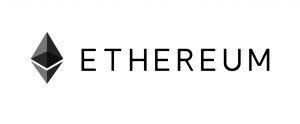The two biggest cryptocurrencies are experiencing growing pains that could change their character and decide their fundamental purpose in the years to come. Bitcoin, the largest digital currency at a market capitalization of $42.6 billion as of Wednesday mid-morning, remains a volatile investment at the same time its users contend with rising fees and its developers wrestle with a controversial plan to boost the capacity of its underlying blockchain.
Then there’s Ethereum, whose native currency, ether, has in two short years shot into second place with a market cap of $28.7 billion. A flash crash last week on an ether exchange, coupled with the network’s popularity among issuers of initial coin offerings (ICOs), raise separate questions about the direction of this blockchain.
According to a plan that emerged early this year and has apparently garnered the support of a majority of Bitcoin’s so-called miners, Bitcoin could by November double the capacity of its blocks to two megabytes. The plan, called SegWit2x, follows a scheme advanced earlier that removes certain signature data from Bitcoin’s transaction messages but leaves the block size alone.

Strained capacity has driven up network cost dramatically as daily confirmed transaction volume overall has grown 139% in the past two years, from 108,876 to 259,737, according to the latest data from Blockchain.info, a United Kingdom-based firm that tracks the digital currency.
Miners, the developers who generate new Bitcoin by solving difficult mathematical problems, are now earning, in terms of Bitcoin, about five times the transaction fee they commanded 12 months ago, according to Blockchain.info.
The issue has allowed at least some processors to allocate block space to the highest bidder. “If you’re willing to increase the fees you pay, you can move to the front of the line,” says George Peabody, who follows cryptocurrency for Glenbrook Partners, a San Francisco-based payments consultancy.
The result is that merchants in some cases find themselves paying higher fees to accept Bitcoin than they pay for Visa or PayPal, according to some reports.
First proposed to the Bitcoin community last fall after a year of work, SegWit reduces transaction size by removing information related to transaction identifiers, or signatures (hence the reference to a segregated witness). In the parlance of the community, this change is considered a “soft fork” to the basic Bitcoin code. But SegWit2x proposes a hard fork by supplementing SegWit with an enlargement of the Bitcoin block size.
With about 86% of Bitcoin miners apparently supporting SegWit2x, the proposal could go into effect by November, according to some observers. Network users who object to the hard fork, however, could cling to the original Bitcoin concept, leaving open the possibility of two Bitcoins.
In the midst of all this, the value of Bitcoin has swung from a low of $2,200 to a high of $3,000 in just the past 30 days, according to prices compiled by Coindesk, an online publication that follows digital currencies. It was trading at $2,596 as of mid-morning Tuesday.
Ether could be facing volatility even more dramatic than that of Bitcoin. On Wednesday last week, an exchange run by Coinbase saw the value of ether plunge from $365 to $13. The price had recovered to $309 as of mid-morning Wednesday.
The flash crash came amid concerns that the Ethereum blockchain, too, is struggling to keep up with transaction volume. In part, the issue stems from the increasing use of the Ethereum blockchain for a relatively new venture-funding model, called the initial coin offering. The ICO allows startups to raise funding by issuing tokens to investors, who can then cash in the tokens for digital currency at a later date.
For both Bitcoin and Ethereum, how urgent these growing pains appear to be “depends on where you sit,” notes Peabody, contrasting those who buy cryptocurrency as a payment method and those who buy it as a store of value. As an investor, he says, “You have to believe the system works, but you’re less concerned about payment processing.”





